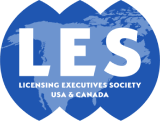In a mission to bolster the NJ innovation ecosystem, the Licensing Executives Society, LES NJ chapter brought together a distinguished panel to address the funding challenges of biotechs. For those navigating the labyrinth of biotech fundraising, this article offers clarity. It distills insights from the forum, presenting a strategic roadmap highlighting tested strategies and success stories.
The Biotech Funding Conundrum
Securing funds in today’s market poses challenges even for established biotechs. Obstacles span from initial skepticism to navigating market volatility. Dr. Pankaj Mohan from Sonnet Therapeutics relayed how even groundbreaking technologies, like his cancer-targeting drug, can meet setbacks in the fundraising journey. Ken Suh, one of the minds behind Sauvie, relayed his transformative journey from Novartis to establishing his own enterprise, influenced by a personal encounter with cancer. His tale of raising over $350 million underscores the determination and strategy required in biotech.
The NJ Chapter of the Licensing Executives Society: A Beacon for Biotechs
On May 18, 2023, at the Basking Ridge Country Club, industry vanguards like Pankaj Mohan, Sam Kongsamut, Ken Suh, and Akan Oton exchanged biotech experiences. Their discussions covered personal accounts, industry dynamics, and investment approaches, offering attendees invaluable networking opportunities and insights. This meeting underscored the biotech sector’s potential, especially after a tough 24-month phase.
Friends and Family Funding
Fundraising often begins with friends and family. While this method can be cumbersome, especially with multiple small contributions, the speakers recognized its vital role. They noted its emotional weight, often heavier than institutional fundraising. Their advice: Collaborate with professionals to oversee these rounds’ logistics, transparency communicating potential risks, and encourage small investors to consolidate resources, simplifying processes like contract reviews.
Partnerships and Licensing Deals in Biotech
The threshold for collaborations has heightened, with firms now favoring later-stage partnerships supported by significant data. However, they express concern that the shift toward later-stage partnerships could negatively impact the sector, as 70% of new drugs come from smaller labs or biotech firms. Besides, early-stage projects are where more value creation comes from.
Academic Organizations, State Governments, and Non-profits
Emerging companies often need help accessing critical technical resources available in larger institutions. Participants proposed that state incentives could make these institutions more startup-friendly. A central issue was IP ownership during collaborations with academia. Many universities seek IP rights, creating challenges for startups reliant on this IP for expansion and funding. The dialogue also touched upon the role of states and non-profits in bridging connections between small firms and established pharmaceutical entities.
Crowdfunding
Crowdfunding was introduced as a potential solution for capital. Yet, the high initial legal costs and unpredictable results were seen as barriers. It’s worth noting that these costs can vary based on the provider.
Venture Capital
Participants noted that when seeking VC backing, it is critical to understand the VC’s return-focused view, forge early relationships, and present a solid narrative backed by data. After all, VC partnerships are more than financial exchanges—they’re enduring relationships.
Family Offices
Located close to NY, the NJ biotech ecosystem can benefit from numerous sophisticated family offices in the region. Participants noted family offices’ diverse investment strategies, some resembling venture capitalists, while others have long-term or disease-focused approaches. It’s vital to discern whether a family office possesses the expertise to invest wisely.
Health Practitioners
During the discussion, another case study highlighted a company that successfully raised $16 million, primarily from surgeons interested in their product. Thus, we should recognize the significant funding opportunity that health practitioners can represent.
Reasons for Optimism
Despite near-term uncertainties, investors recognize the enduring strength of the innovation economy and keep pledging funds since, historically, downturns in the market have led to higher returns and more sustainable investments—factors like better-than-expected GDP growth and potential halted federal rate hikes fuel optimism.

